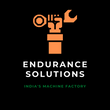Process of Corrugation
A series of machines designed to bring together two, three, five, seven or nine sheets of paper to form single, double or triple wall board is called a corrugator.
The Raw Material used to make the corrugated board is:
- Liner: Becomes the flat facing of the board. It is basically derived from fibers of softwood trees.
- Medium: Becomes the fluted middle layer of the board. It is basically derived from fibers of hardwood trees.
The first step of combining liner and medium occurs in a machine called Single Facer.
The medium passes through a set of grooved metal rolls under high heat and pressure to form a flute. It provides the board a cushioning capability.
The Pressure roll brings the liner into contact with fluted material.
The corn starch based glue is applied to the flute tips through glue roll. The Glue roll turns to the Metering Roll to regulate the amount of glue.
It is guaranteed by the Metering roll that the adhesive reaches a proper consistency to form a strong bond between the liner and the fluted medium that in turn forms a single face web.
A single face web which is also known as a 2 ply board is then shifted to a sheet cutter, where a sheet is cut as per the required width and dimensions and hence a 2 ply corrugated board is prepared.
In case a customer wants a 3/5/7/9 ply board, the single face web is transferred to a Double Gluer or a pasting machine.
A Double Gluer combines the single face web and liner through a corn starch based adhesive.
For a 3 ply board, one single face web and one liner is combined. For a 5 ply board, two single face webs and one liner is combined.
For a 7 ply board, three single face webs and one liner is combined.
For a 9-ply board, four single face webs and one liner is combined.
One variation here is that required template or design can be printed separately on a high-quality paper and used in place of liner paper to prepare the required board. Further print enhancing options like lamination and uv coating on offset printed paper are
Typically, when quality of output is a priority a flute laminator is used in place of manual pasting machine. It increases both the speed and efficacy with which the final board is produced.
After a board is ready, the further process to make a complete Corrugated Board depends on whether the customer want a Non-Printed Board or a Printed Board.
For a Non Printing Corrugated Board;
A Slitter Scorer machine is used.
A Slitter Scorer slits the sheet into proper width. If needed places the scores into the sheet at proper dimensions.
At last the sheet is then glued or stitched into a Corrugated Box through Folder Gluer or Semi Auto Box Stitcher.
A Folder Gluer glues as well as folds the boxes while A Semi Auto Stitcher stiches the sheets to form a Corrugated Box.
For a Printed Corrugated Board:
A Printing and Rotary Die Cutting Machine is used.
This Machine totally eliminates the need of a slitter scorer as it slits, scores and print the corrugated sheet.
There is a high degree of customization available in such machines depending on the number of colors you want as an option as well as further quality improvement like UV coating.
At last the sheets are fed into a Folder Gluer or a box stitcher to form a complete corrugated box.
The Corrugated boards are stacked, strapped into bundles and are shipped flat to the customers.


Tips very well considered!.
best casinos online canada https://bhcmerced.org/canadian-casino-online/ canada online casino
Awesome info, Kudos!
online casino top [url=https://bhcmerced.org/#]play online casino[/url]
Whoa lots of very good tips!
canada casino online luxury casino canada casino canada en ligne
If you want the Is This a Cry for Help PDF, download it now. This digital file is fast. Get the copy today. https://isthisacryforhelppdf.site/ Is This A Cry For Help Iphone Ebook
This book is as essential as salt in a recipe. Get the PDF copy to flavor your reading list. With the Fire on High explores the intersections of race, class, and parenthood through the lens of a talented young chef. https://withthefireonhighpdf.site/ With The Fire On High Full Story
Leave a comment